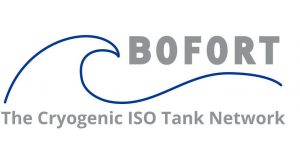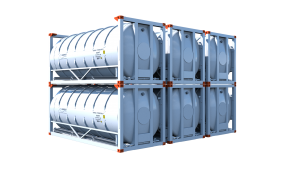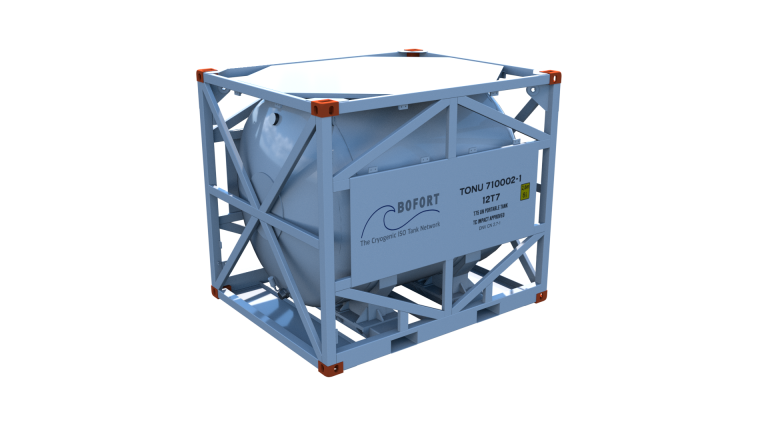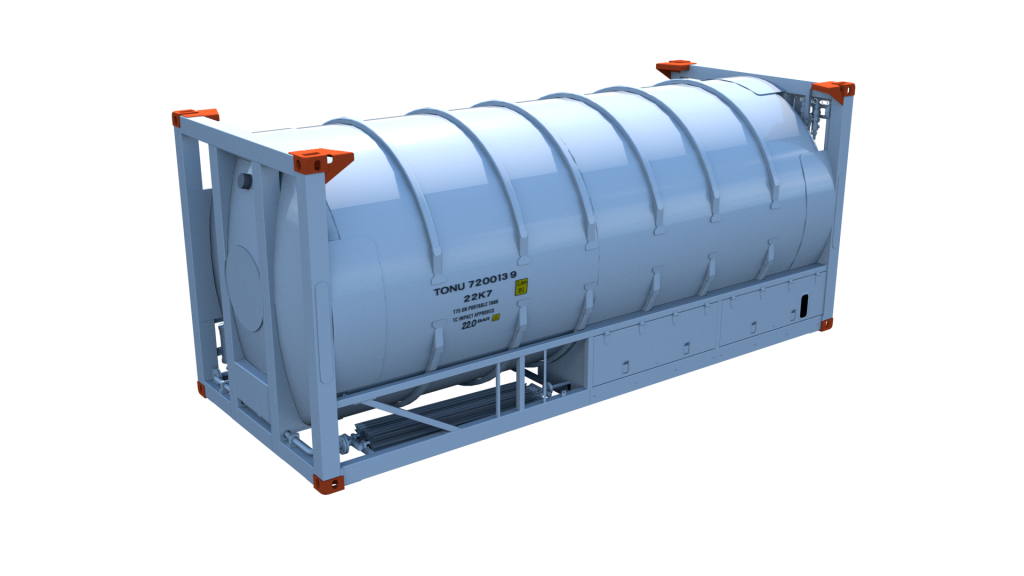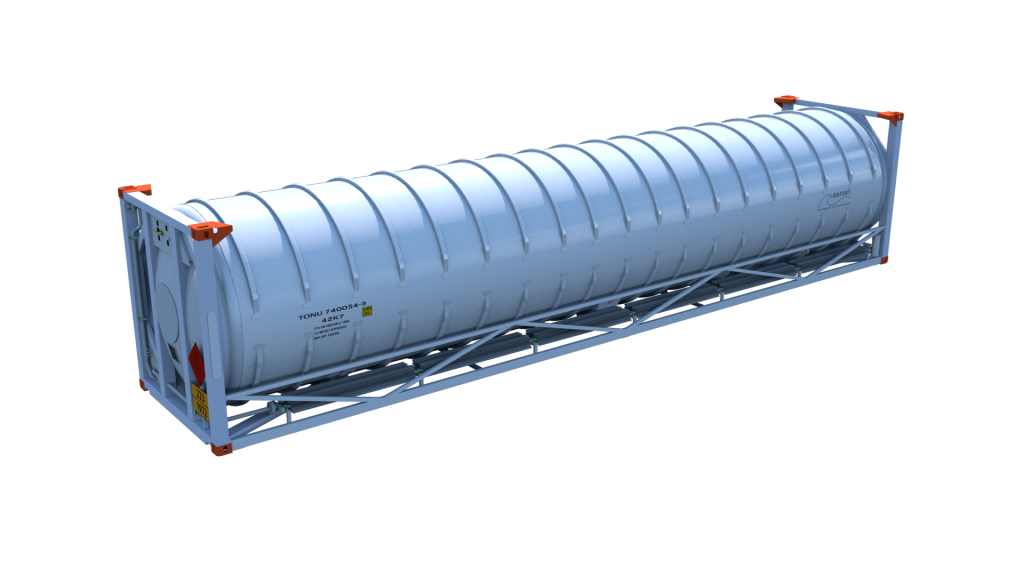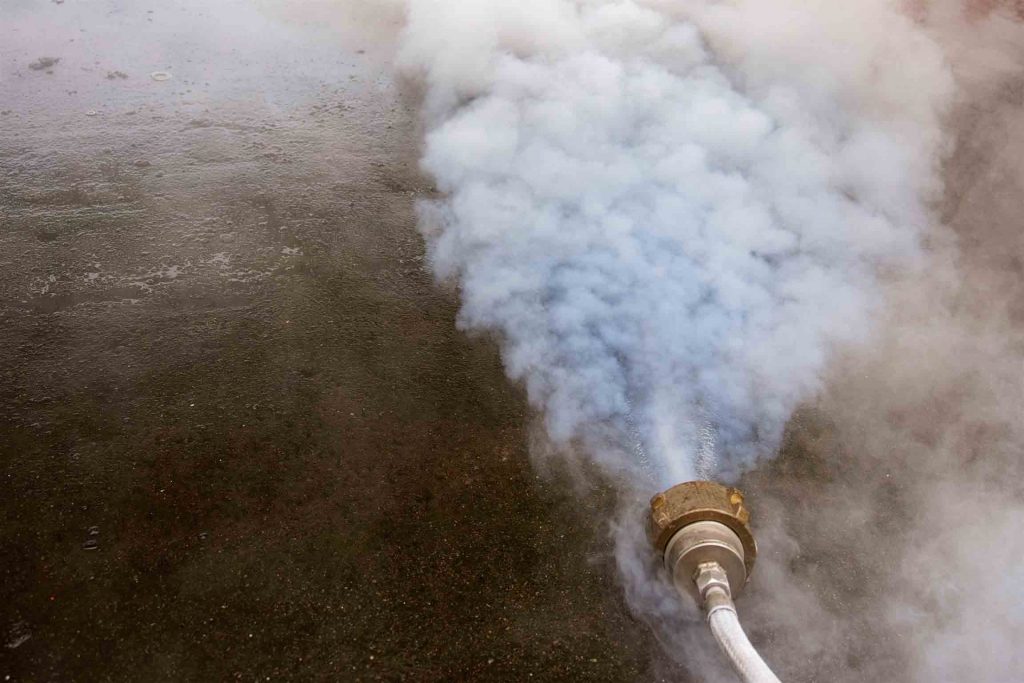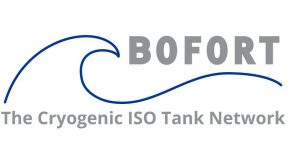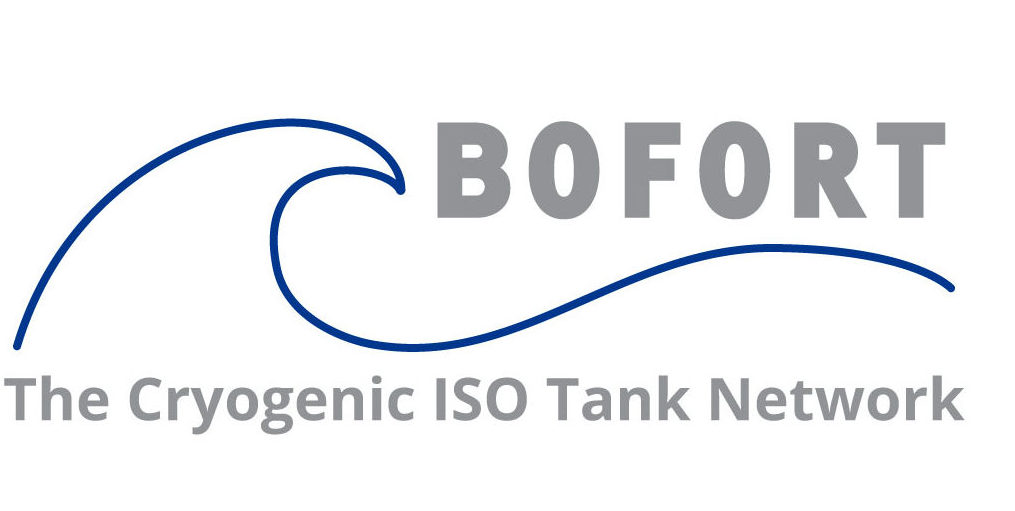
The inertization of cryogenic ISO tank containers and pipes is an efficient system for preventing the formation of potentially explosive atmospheres and involves diluting combustive agents (oxygen present in the air) with inert gases such as nitrogen, argon and carbon dioxide.
Three elements are required to initiate and sustain combustion: an ignition source (heat), fuel and oxygen. Combustion may be prevented by reducing any one of these three elements. If the presence of an ignition source cannot be prevented within a fuel tank, then the tank may be made inert by:
- reducing the oxygen concentration of the ullage—the space above a liquid fuel—to below that concentration capable of combustion (the combustion threshold) or
- reducing the fuel concentration of the ullage to below the lower explosive limit (LEL), the minimum concentration capable combustion or
- increasing the fuel concentration to above the upper explosive limit (UEL), the maximum concentration capable of combustion.
At present, flammable vapors in fuel tanks are rendered inert by replacing the air in the tank with an inert gas, such as nitrogen This reduces the oxygen concentration of the ullage to below the combustion threshold. Alternate methods based on reducing the ullage fuel-air ratio to below the LEL or increasing the fuel-air ratio to above the UFL have also been used.
